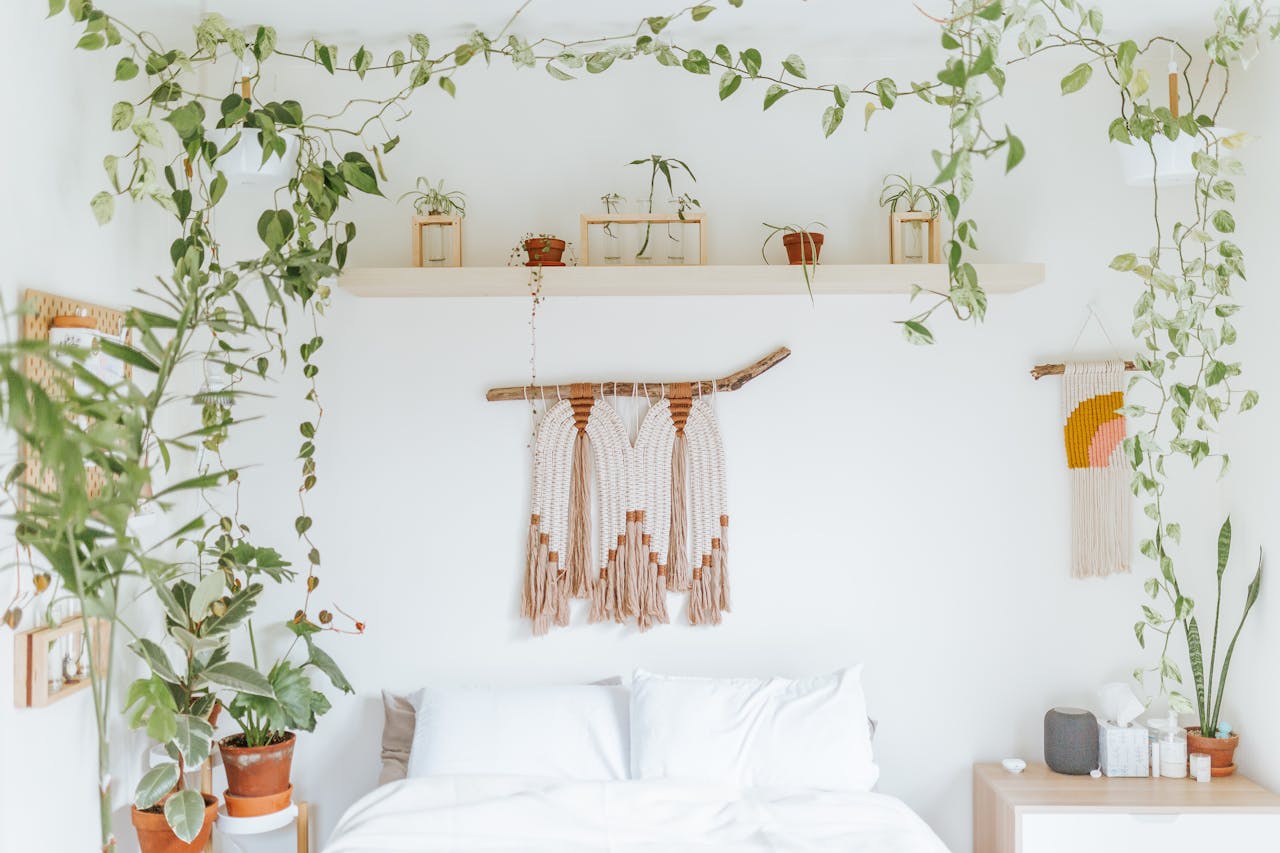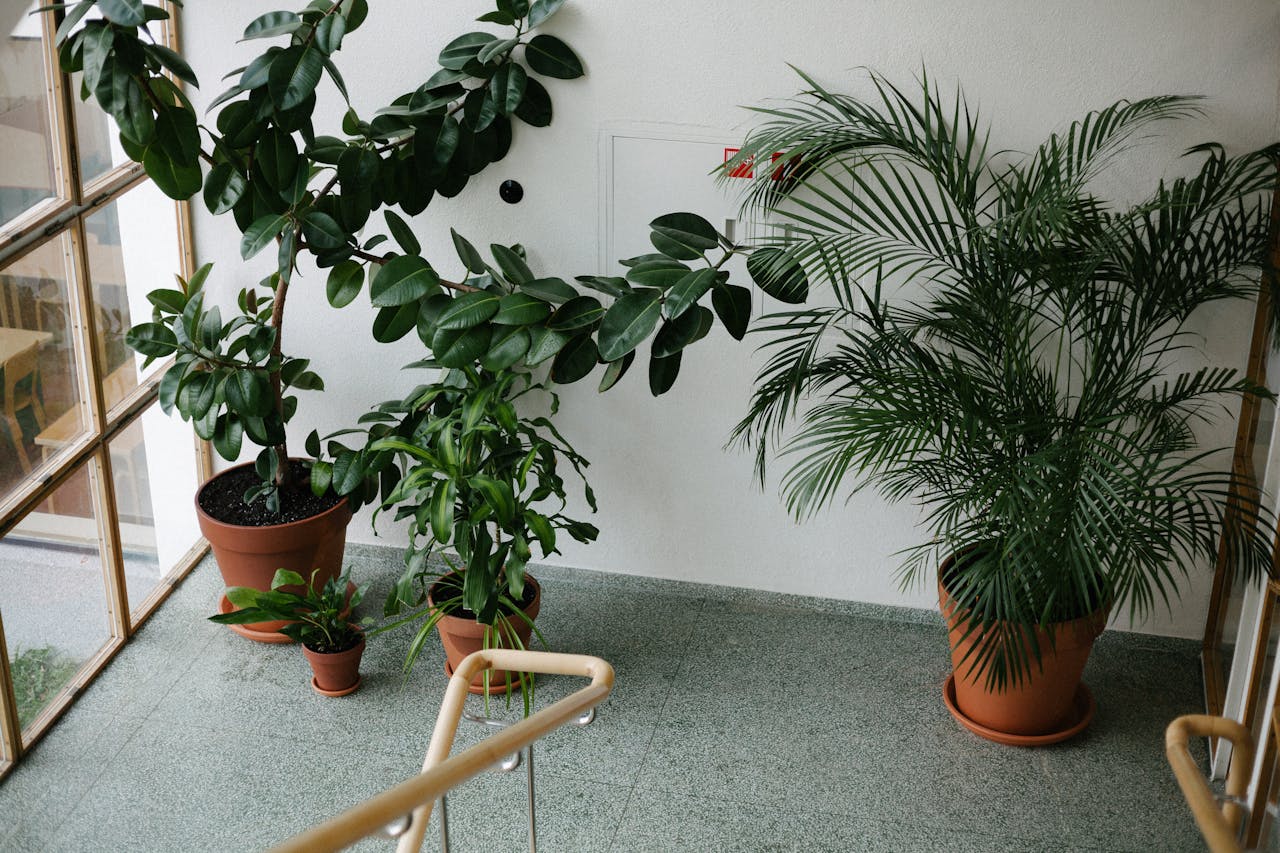Tropical plants are prized for their lush foliage and vibrant colors, adding a touch of paradise to any indoor space. However, one of the key challenges in maintaining these beautiful plants is ensuring they receive adequate humidity. Many indoor plants, especially during winter or in arid climates, can fall short of the moisture levels tropical plants thrive in. Increasing humidity is essential for the health and vitality of your tropical plants. This guide provides practical and effective strategies to boost humidity levels, ensuring your indoor tropical garden flourishes year-round.
1. Understanding Humidity Needs of Tropical Plants

Tropical plants originate from regions with high humidity, typically ranging from 60% to 80%. These conditions support their lush growth and vibrant colors. When indoor humidity drops below their preferred levels, plants may exhibit signs of stress such as wilting, brown leaf tips, and slowed growth. Understanding the specific humidity requirements of your tropical plants is the first step in providing the optimal environment they need to thrive.
2. Identifying Low Humidity Signs in Tropical Plants

Before implementing humidity-boosting techniques, it’s important to recognize the signs that your plants need more moisture:
- Brown Leaf Tips and Edges: Dry air causes the tips and edges of leaves to turn brown and crispy.
- Wilting Leaves: Lack of humidity can make leaves lose turgidity, causing them to wilt even if the soil is adequately moist.
- Slowed Growth: Low humidity can inhibit the plant’s growth, resulting in smaller leaves and fewer new shoots.
- Dry Soil Surface: The top layer of soil may dry out quickly, indicating insufficient moisture retention in the environment.
Also Read- How To Use Indoor Plants To Create A Zen Space In Your Home
3. Practical Ways to Increase Humidity Indoors

There are several effective methods to elevate humidity levels in your home, tailored to fit different living spaces and lifestyles.
a. Use a Humidifier
A humidifier is one of the most efficient ways to maintain consistent humidity levels. There are various types available:
- Cool Mist Humidifiers: These add moisture without increasing the room temperature, making them ideal for warmer climates.
- Warm Mist Humidifiers: These emit steam, which can help in colder environments by adding both humidity and warmth.
Place the humidifier near your tropical plants, ensuring it covers the area where your plants are located.
b. Group Plants Together
Grouping multiple plants together creates a microenvironment with higher humidity. As plants release moisture through transpiration, the collective output can significantly increase the surrounding humidity. This technique not only benefits each plant but also creates a lush and cohesive indoor garden.
c. Misting the Plants
Regularly misting your tropical plants can provide a temporary boost in humidity. Use a spray bottle filled with room-temperature water and gently mist the leaves, ensuring thorough coverage. However, be cautious not to overdo it, as excessive moisture can lead to fungal diseases.
d. Place Plants on Pebble Trays
A pebble tray is a simple and effective way to increase humidity around your plants. Here’s how to set it up:
- Fill a Tray with Pebbles: Use decorative pebbles or gravel and fill a shallow tray about halfway.
- Add Water: Pour water over the pebbles until they are partially submerged, but ensure the pot is sitting on the pebbles and not directly in the water.
- Position Your Plants: Place the plant pots on top of the pebbles. As the water evaporates, it will increase the humidity around the plants.
e. Use a Room with Natural Humidity
Bathrooms and kitchens often have higher natural humidity levels due to activities like showering and cooking. Position your tropical plants in these areas to take advantage of the increased moisture in the air. Ensure the plants still receive adequate light and are not exposed to direct heat sources.
f. Seal with Plastic Bags
For a more controlled increase in humidity, you can create mini-greenhouses around individual plants:
- Use Clear Plastic Bags: Choose a clear plastic bag large enough to cover the plant.
- Create a Tent: Gently place the bag over the plant, creating a tent-like structure.
- Ventilation: Make small holes or remove the bag periodically to allow for air circulation and prevent mold growth.
Also Read- 5 Easiest Indoor Plants To Maintain With Minimal Attention
4. Optimizing Indoor Environment for Maximum Humidity

Enhancing humidity levels can be complemented by optimizing other environmental factors to create the perfect habitat for your tropical plants.
a. Maintain Consistent Temperature
Tropical plants thrive in stable temperatures. Avoid placing plants near drafty windows, heating vents, or air conditioners, as sudden temperature changes can stress the plants and reduce their ability to retain moisture.
b. Choose the Right Location
Position your tropical plants in areas where they can receive adequate indirect light. While high humidity is essential, so is the right amount of light to support photosynthesis and overall plant health.
c. Proper Ventilation
Good airflow prevents the buildup of stagnant air, which can lead to fungal diseases. Ensure that your indoor space is well-ventilated without creating drafts that could dry out your plants.
5. Additional Tips for Maintaining High Humidity

Beyond the primary methods, here are some extra tips to keep humidity levels optimal for your tropical plants:
- Use Water Features: Small indoor fountains or water features can add moisture to the air as water evaporates.
- Decorative Water Bowls: Placing shallow bowls of water around your plants can naturally increase humidity as the water evaporates.
- Keep Plants Clean: Dust can block pores on leaves, hindering transpiration. Regularly clean your plants to ensure efficient moisture release.
- Adjust Humidity Seasonally: Be mindful of seasonal changes and adjust your humidity-boosting techniques accordingly. Winter heating can dry out the air, while summer might require more frequent watering and misting.
Also Read- Top Mistakes To Avoid When Caring For Indoor Plants In Winter
6. Benefits of Increased Humidity for Tropical Plants

Enhancing humidity levels provides numerous benefits for your indoor tropical plants:
- Healthier Foliage: Increased moisture helps prevent leaf browning and promotes vibrant, lush growth.
- Improved Growth Rate: Adequate humidity supports faster and more robust growth, allowing your plants to thrive.
- Reduced Pest Problems: Higher humidity can deter certain pests and reduce the likelihood of fungal infections.
- Enhanced Air Quality: Tropical plants naturally purify the air, and maintaining optimal humidity levels ensures they can perform this function effectively.
7. Common Mistakes to Avoid
While increasing humidity is beneficial, it's important to avoid common pitfalls that can harm your tropical plants:
- Over-Misting: Excessive misting can lead to mold growth and fungal diseases. Mist plants only when necessary and ensure proper air circulation.
- Water Stagnation: Using trays with standing water can cause root rot. Ensure pots are elevated above the water level on pebble trays.
- Neglecting Light Needs: Focusing solely on humidity while neglecting light can weaken your plants. Balance humidity with appropriate lighting conditions.
- Ignoring Plant Health Signs: Pay attention to your plants’ responses to humidity changes. Adjust your methods if you notice signs of stress or disease.
Also Read- How To Use Indoor Plants For Aromatherapy: Health Benefits Of Natural Scents
Conclusion
Maintaining optimal humidity levels is crucial for the health and beauty of your indoor plants. By implementing these effective strategies—such as using humidifiers, grouping plants, misting, utilizing pebble trays, and optimizing your indoor environment—you can create a thriving habitat that mimics the natural tropical conditions your plants crave. Avoid common mistakes and stay attentive to your plants’ needs to ensure they remain lush, vibrant, and resilient year-round.
Embrace these humidity-boosting techniques to enhance the vitality of your tropical garden, making your indoor space a green oasis of health and beauty. With the right care and attention, your tropical plants will flourish, bringing life and freshness to your home.













Leave a comment
This site is protected by hCaptcha and the hCaptcha Privacy Policy and Terms of Service apply.